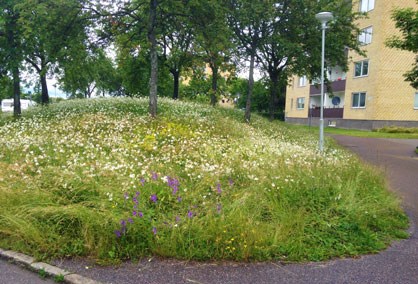New publication from CBM: “Estimating urban lawn cover in space and time: Case studies in three Swedish cities”

The article was published in March in Urban Ecosystems, and is built upon research from the LAWN-project.
Lawns are considered monocultures and lesser contributors to sustainability than diverse nature but are still a dominating green area feature and an important cultural phenomenon in cities. Lawns have esthetical values, provide playground, are potential habitat for species, contribute to carbon sequestration and water infiltration, but also increase pesticides, fertilization, are monocultures and costly to manage at the same time.
To evaluate the potential impact of lawns, whether positive or negative, it is of interest to estimate the total lawn cover in cities and its change over time. This is not a straightforward process, e.g., because many lawns are small and covered by trees.
In this study we review the existing literature of lawn cover in cities and the different methodologies used for cover estimation. We found both pros and cons with NDVI and LiDAR data as well as manually interpreted aerial photos. The total cover of lawns in three case study cities was estimated to 22.5 %. By extrapolating these percentages to all Swedish cities lawn cover was estimated to 2589 km2 (0.6 % of the terrestrial surface). The approximated total municipal management cost of lawns in all Swedish cities was 910,000,000 USD/ year. During 50 years lawn area almost doubled in relative cover and 56 % of them were continuously managed. Since lawns constitute large parts of the urban greenery and are costly to manage it is highly relevant to consider their social, ecological and cultural value compared to alternatives, e.g., meadows with less intensive management.
Authors of the articleis, besides Jörgen Wissman, CBM: Marcus Hedblom (Dept of. Ecology, SLU) Fredrik Lindberg (Dept of. Earth Sciences, Gothenburg University) Emanuel Vogel (Geovetarcentre, Gothenburg University) och Karin Ahrné (Artdatabanken, SLU).
Read the article: http://link.springer.com/article/10.1007/s11252-017-0658-1